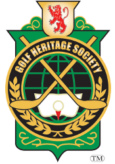GHS Historic Golf Clubs
The GHS partners with golf’s Historic Clubs to share their history and artifacts from an insider’s viewpoint
Included below are…
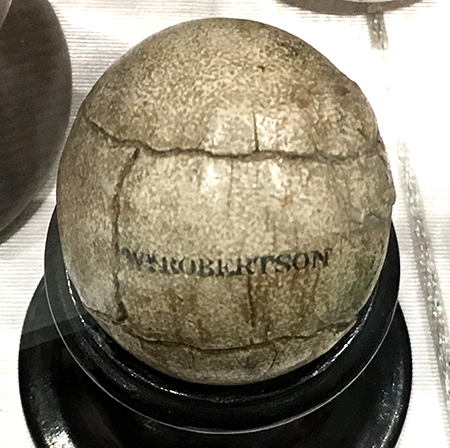
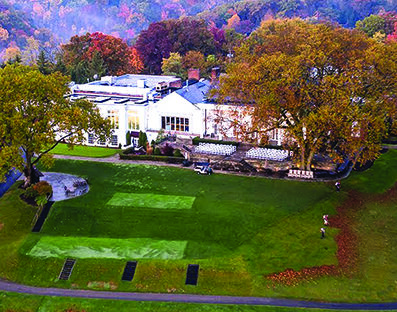
GHS Historic Golf clubs
Pittsburg Field Club
One of the Golf Heritage Society’s first “Heritage Clubs” is the oldest “sporting” club in Western Pennsylvania and one of the oldest in the United States. The Pittsburgh Field Club started as the Pittsburgh Cricket Club as early as 1871 by some accounts. It officially incorporated on April 1, 1882, where the English game continued to reign supreme until golf came to the region in the mid-1890s.
Ghs historic golf clubs
Youngstown Country Club, Ohio
Since its inception in 1898, the Youngstown Country Club in Ohio has been a pillar of the community and a gathering ground for the region’s titans of industry. The club itself was started as the Mahoning Golf Club by a group of 80 men and women who each subscribed for five dollars…
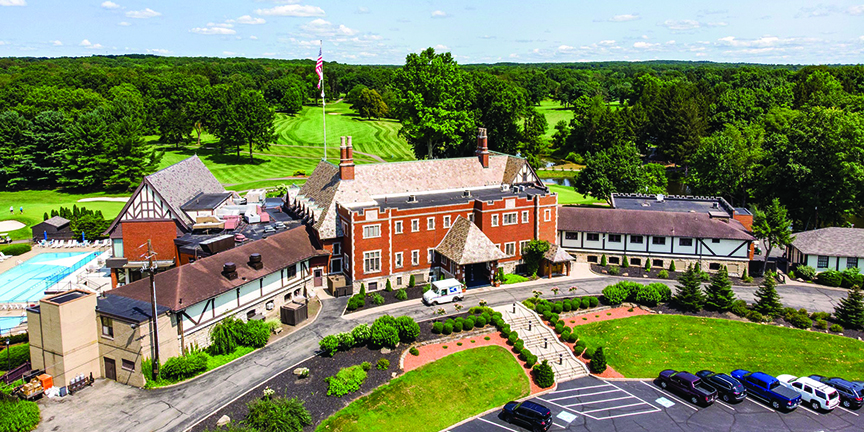
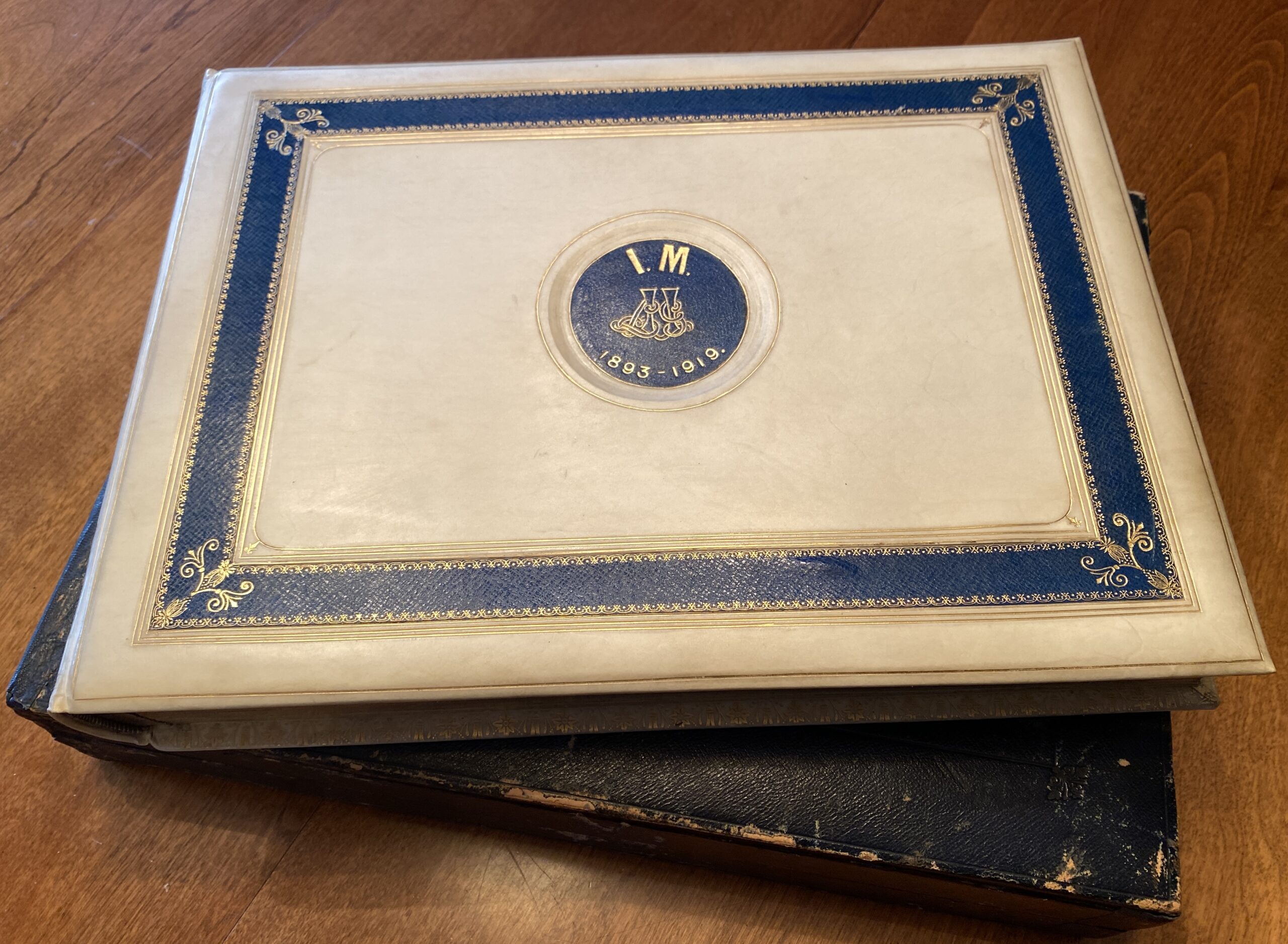
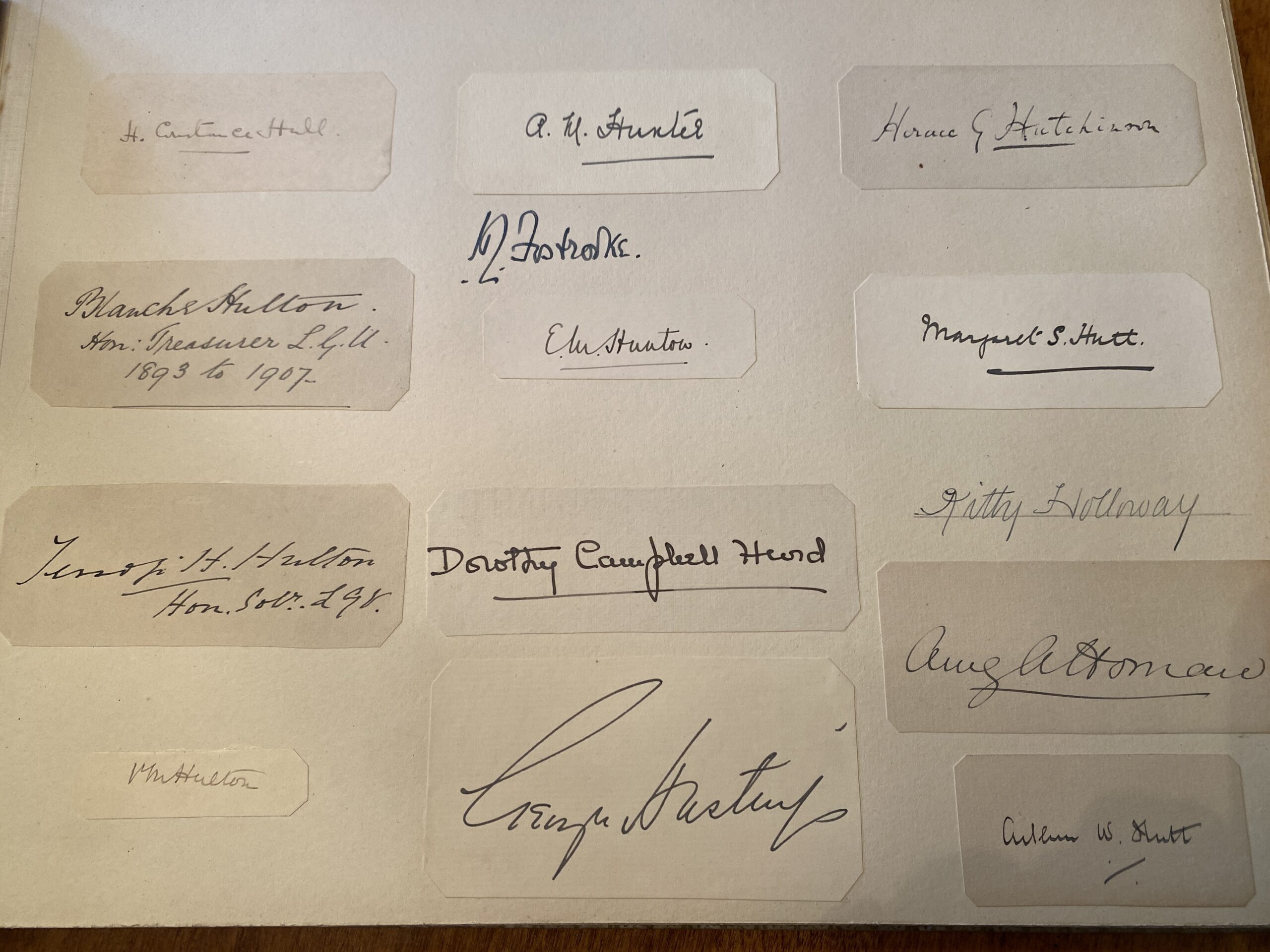
GHS virtual golf museum
Issette Pearson's Gifted Signature Album
Miss Issette Pearson (Miller) was the founder of the British Ladies Golf Union (LGU) in 1893 and its secretary for over 25 years One of her most important achievements was to develop the handicap system that allows golfers of mixed abilities to compete. She was runner up to Lady Margaret Scott in the first two Ladies’ British Open Amateur Championships.
When she formally retired from golf as an official, the LGU gave her, as her own choice, an album containing the signatures of as many of her friends as was possible to obtain. That album is pictured here. It is leather bound with 36 pages of signatures in a hard case, and includes those of most of the Champions and leading women golfers of the era. At the presentation ceremony during the LGU annual meeting, Mr. Horace Hutcheson (a VP of the LGU) gave a speech in her honor.
Also shown is one of the pages of that album which includes the signatures of Blanche Hulton, the treasurer of the LGU from 1893-1907, and Horace Hutcheson. What is ironic is that early in 1893 he had written a formal letter to Blanche about the proposed formation of the LGU, warning her that the idea was bound to fail due to the unlikelihood of women to unite without a quarrel, and that they are physically unfit for the strain of two rounds a day for the championship. He obviously reversed his opinion with the great success of the first championship later that year.
ghs virtual golf museum
Original Painting:
Hogan's Valiant Effort
The 1960 US Open was won by Arnold Palmer.
Ben Hogan nearing the end of his career and so badly wanting to gain his fifth and record-breaking US Open after a heartbreaking playoff defeat to Jack Fleck in 1955, took a chance for victory that ended in a heartbreaking defeat.
With Arnold’s charge in progress, Ben figured he’d need a birdie on the 17th hole at Cherry Hills CC in Denver, Colorado to obtain the record. It turns out that he would not have needed that birdie but here’s how things unfolded. With the pin just beyond the water skirting the front of the green, Ben decided to stick it close given that his putting woes late in his career forced him to take such chances. The ball landed near the pin but sucked back just into the water. With shoe off and with a mighty lash, the ball made the green, but bogey was had and Arnold won.
Shown is the original painting used for the front cover of GOLF magazine commemorating Hogan’s last chance at the US Open, by Lealand R Gustavson (1894-1966), a prolific practitioner of fine art and illustration for many leading publications.
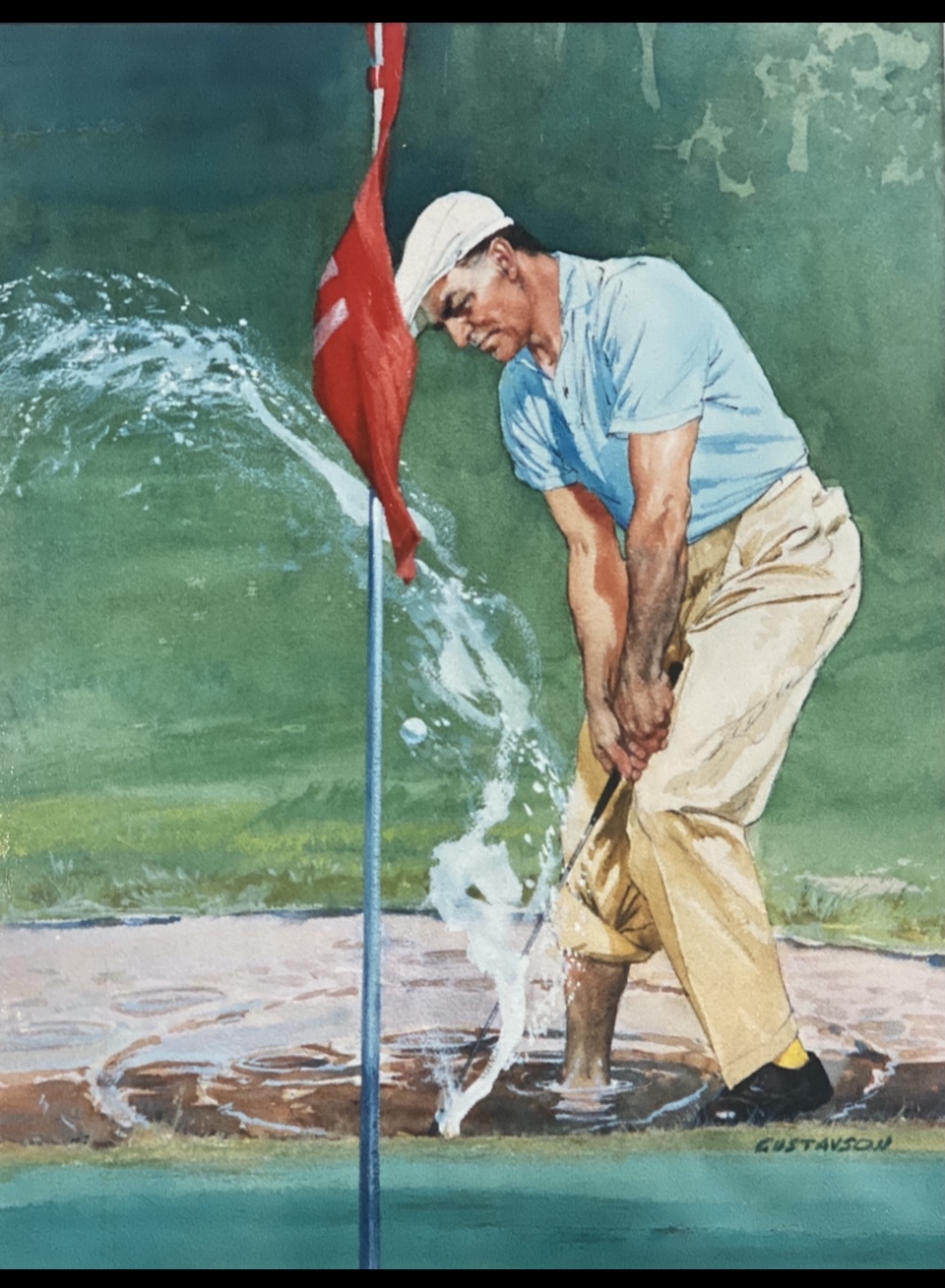
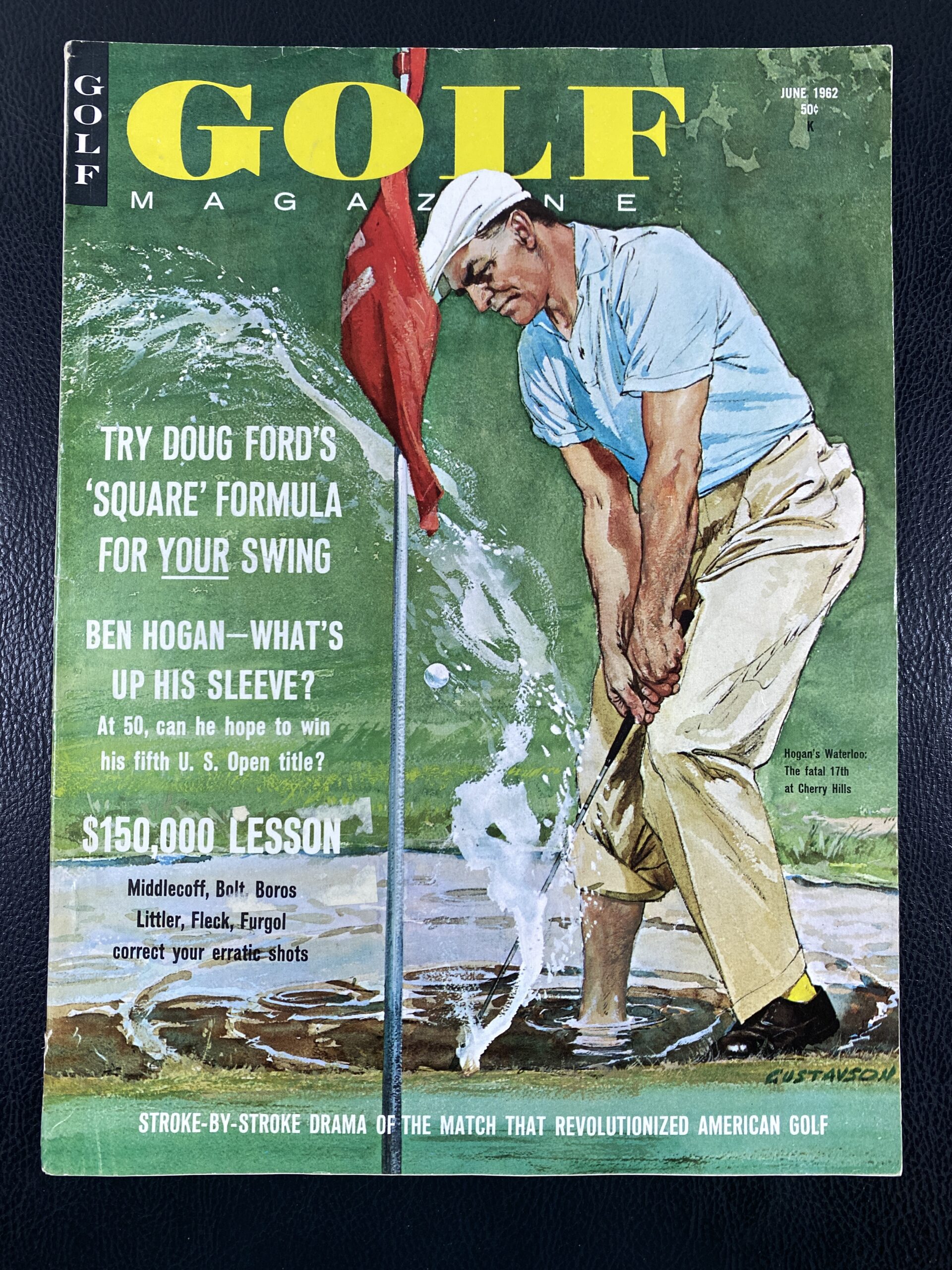
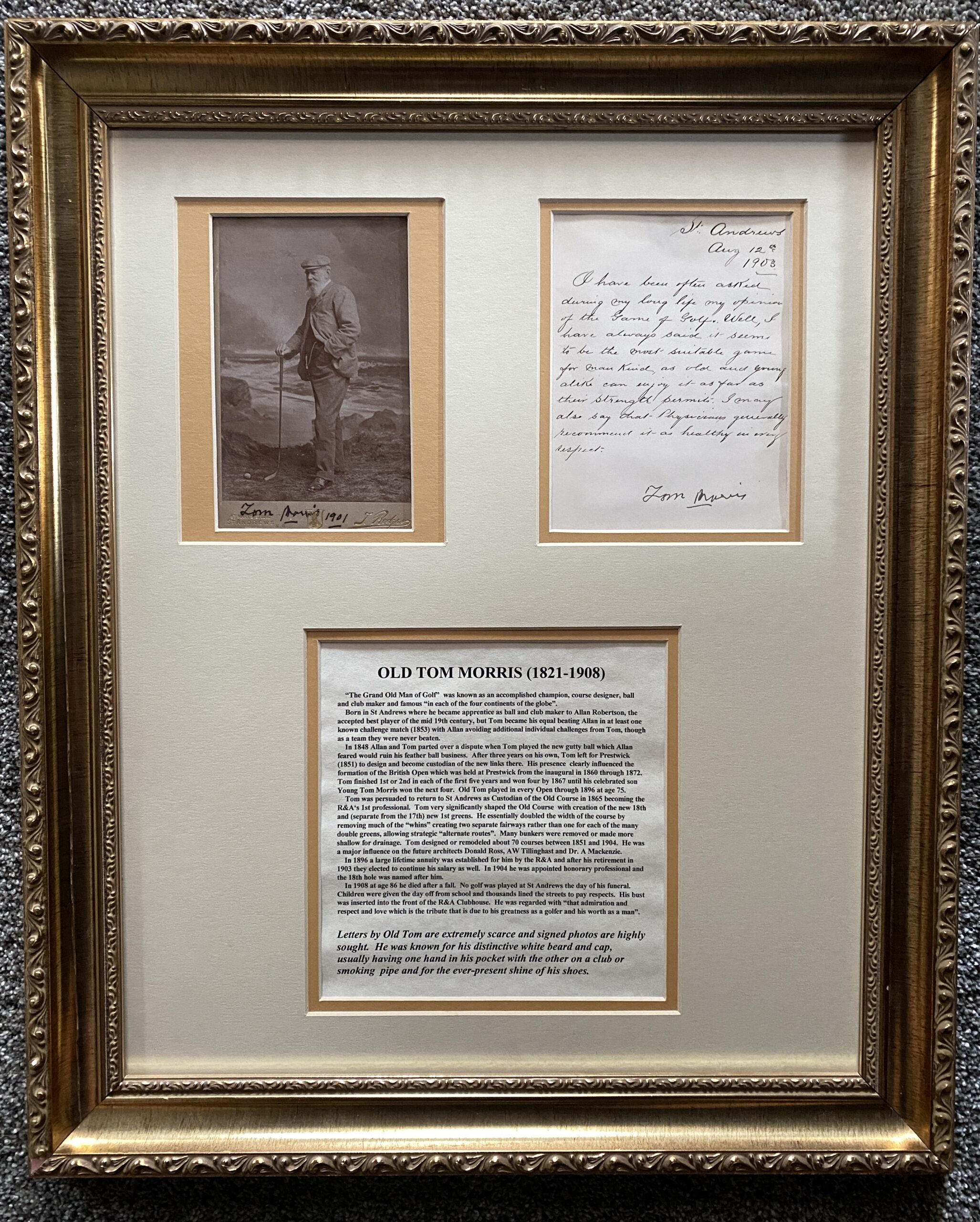
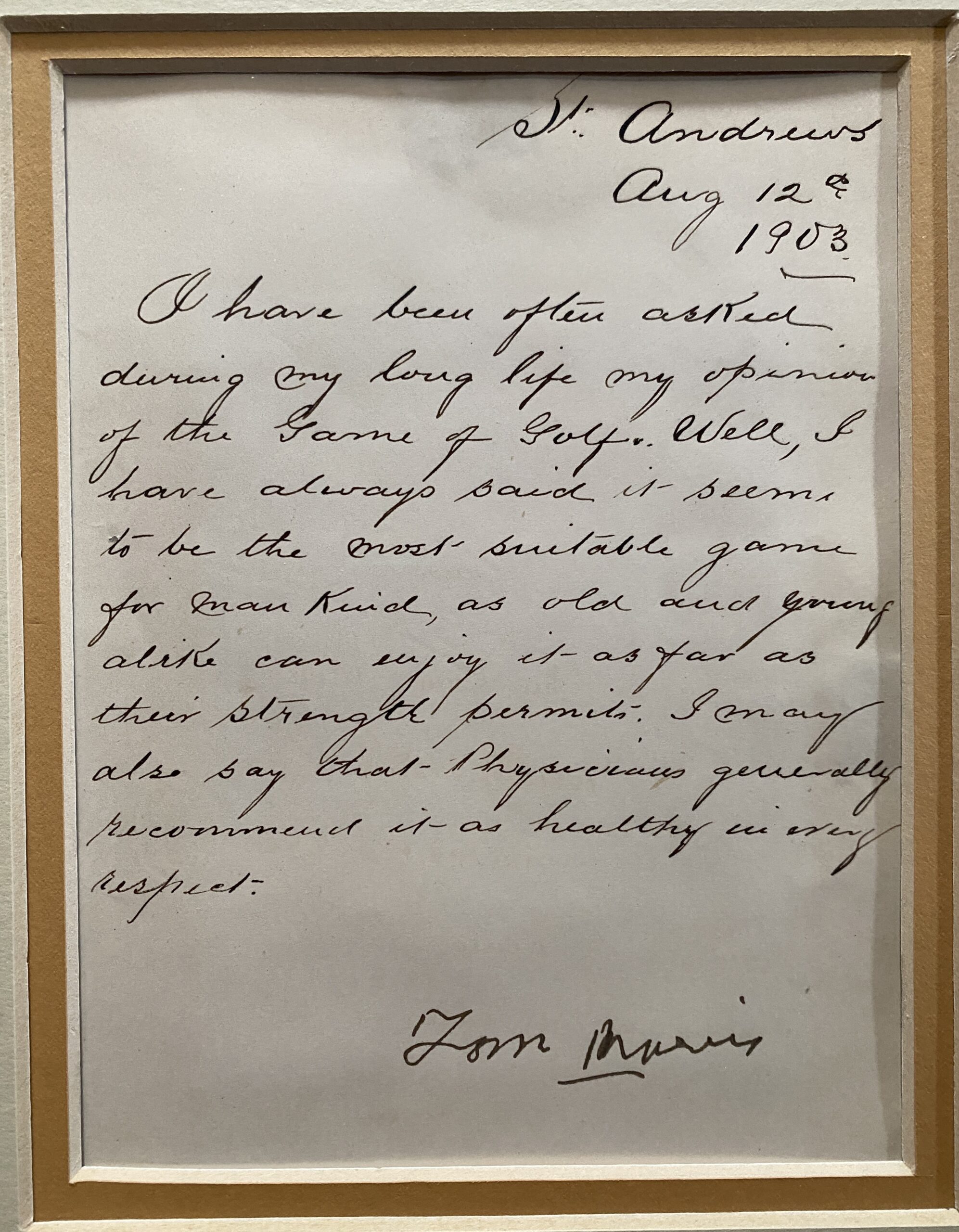
ghs virtual golf museum
Old Tom Morris
Signed photographs of Tom Morris Sr. are highly sought, such as this particular J. Rogers of St. Mary’s Studio, St. Andes example (which has been reprinted in several books and posters since).
But any signed letter by Old Tom is exceptionally rare. Infact, only one letter has been discovered that is both fully written and signed by Tom. Due to his illiteracy, the few rare examples have the content written by his son or daughter to which Tom added his signature.
Ghs virtual golf museum
Masters Tickets & Badges
One of the most popular examples of tournament ticket collecting is for the Masters. Many who have done so, began by saving the ticket from their first or only visit. An added challenge is to get the winner that year to sign them at some point, sometimes during a future visit. Of course, auctions are a major source for additions.
From the inaugural event in 1934 to the present day, paper tickets have been produced for daily entrance. (Sunday tickets are more highly sought than a Tuesday practice round). From 1934 through 1960, those weeklong passes were all paper tickets, but beginning in 1961, plasticized pin-backed “Badges” became available for full week entry, in addition to the daily paper tickets. The competition amongst collectors for the early tickets/badges is fierce.
Enjoy this collection which includes examples from all past years, many signed by that year’s winner.
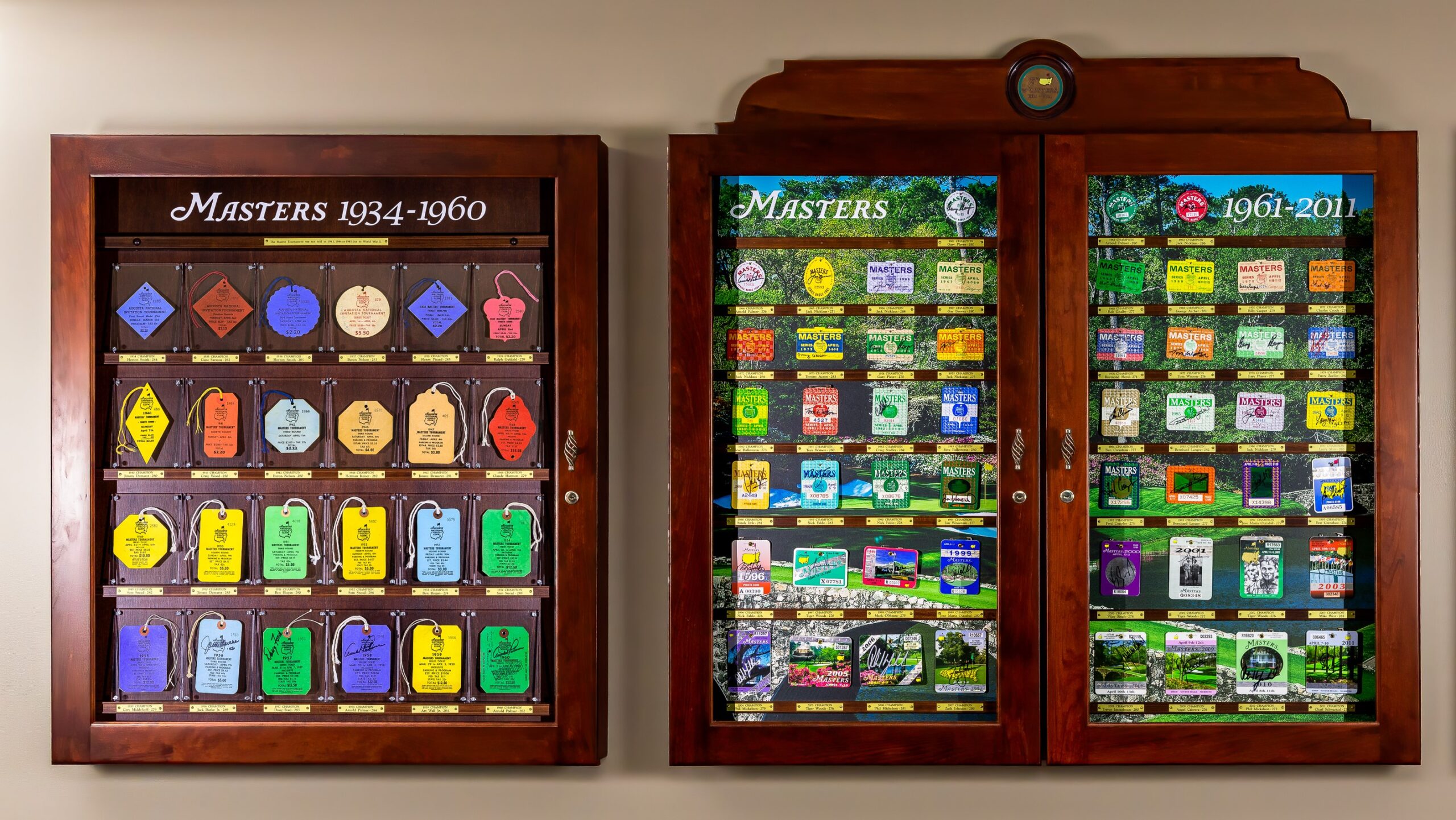
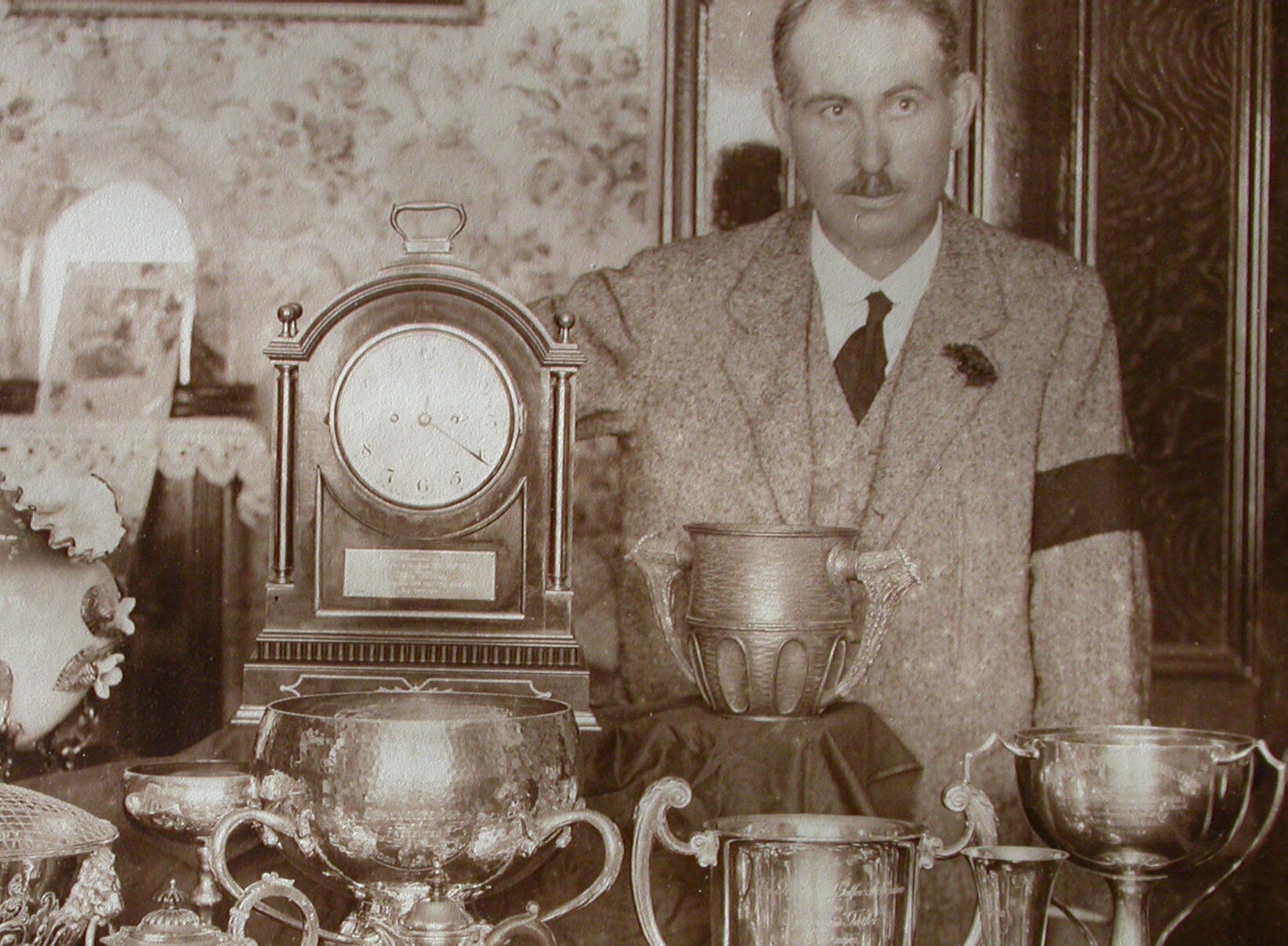
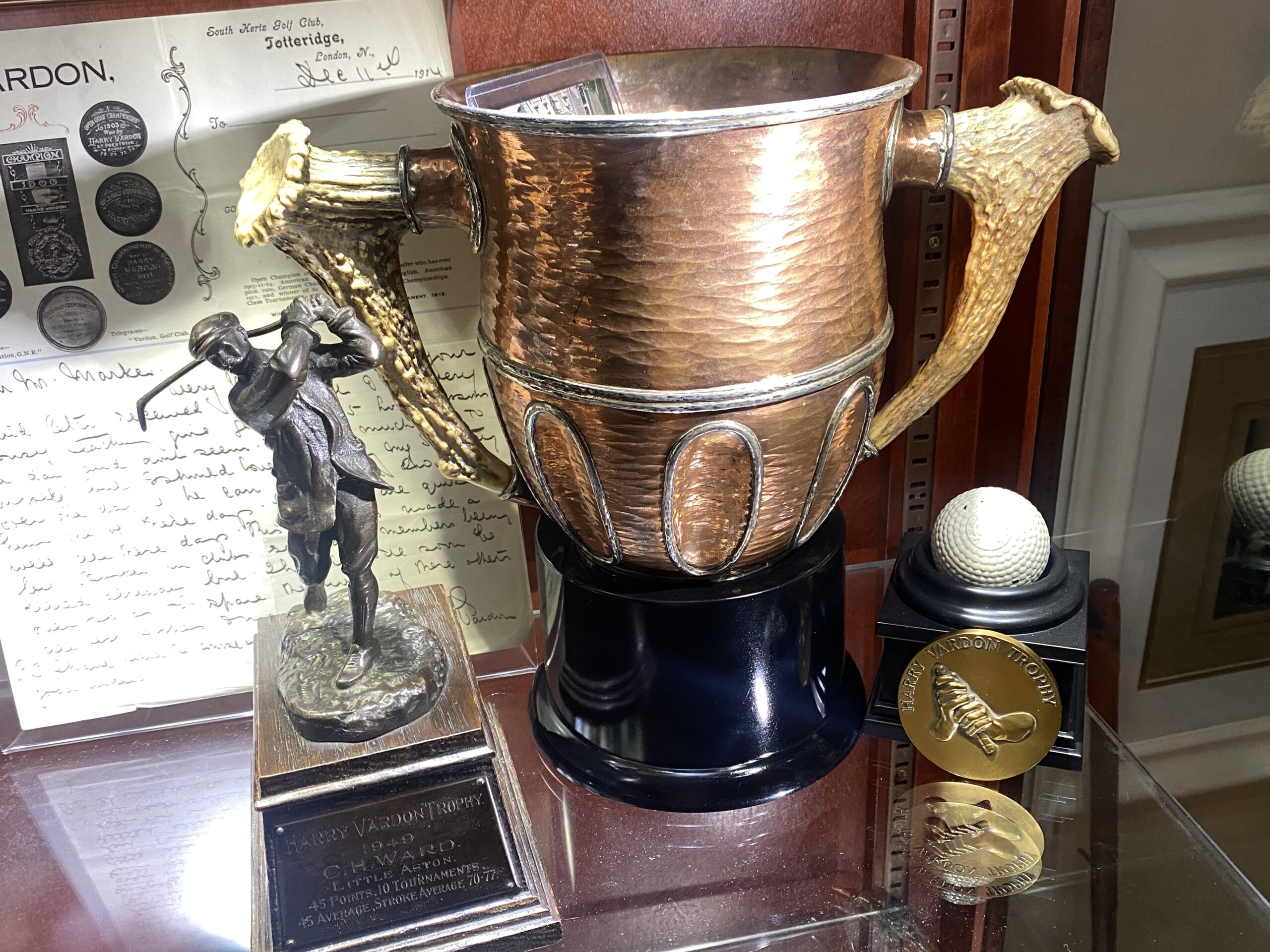
GHS virtual golf museum
Harry Vardon's 1900 US Tour
Harry Vardon was enticed by the Spalding company to tour America in 1900 and promote their new Vardon clubs and Vardon Flyer golf ball. While on that trip he won the 1900 US Open and nearly all of his numerous exhibitions matches between February 12th and December 10th, often against the better ball of two top players.
One of those exhibition matches was in Poland Springs, Maine on August 25th, where Vardon defeated the pair of Alex Findlay and Arthur Fenn, 4 and 2. Newspaper Articles recounted Vardon’s warm reception there saying that after the match, “Vardon entered the great hall to cheers, followed by speeches and then the singing of “God save the Queen” and the “Star-Spangled Banner” to the delight of the guests of the hotel”, who then awarded him this American styled copper/silver trophy with deer antler handles. This appears to be the only trophy awarded to Vardon on his American tour. It is obvious from the photo taken years later in Vardon’s own home, how much that reception meant to him, as he displays it prominently amongst his other awards.
The book “The Vardon Invasion- Harry’s Triumphant 1900 American Tour” by Bob Labbance with Brian Siplo, is a wonderful account of the tour that sparked even greater interest and advanced the growth of golf in America.
Other items on the display shelf include: a letter on Vardon’s famous stationary, a Vardon Flyer ball, a “Vardon Trophy” medal (featuring Vardon’s famous grip) for the PGA Tour’s leader in scoring average for the year, and a “Harry Vardon Trophy” statue (by Hal Ludlow for Elkington & Co.) for the European Tour’s low scorer.
Ghs virtual golf museum
Super-Giant
Niblick & Mashie
The usual “giants” produced intermittently by several different makers between about 1905 and into the 1920’s were only moderately larger than regular irons and were playable. They are not uncommon but have wonderful appeal.
Club expert Jeff Ellis proposes that a true “giant niblick” has between 3 1/4″ and 3 7/8″ of face depth at its deepest point, while a Dreadnought niblick or Junior Mammoth Niblick is usually between 2 1/2″ and 3″ tall. In person, super-giants look more and more massive with even small incremental increases in size. Giant Niblicks are more common than giant irons and putters.
Pictured here, flanking Titleist’s newest Vokey SM10 wedge, are a super-giant niblick made by J. P. Cochrane which measures over 4 1/2″ tall and 5 3/4″ long, and a super-giant mashie of extreme weight, made by W.L. Ritchie measuring 3 3/4″ tall and 5 1/2″ long.
Some believe that such rare, true giants, are so unwieldy that they may have been for sales display or to demonstrate a maker’s craftsmanship.
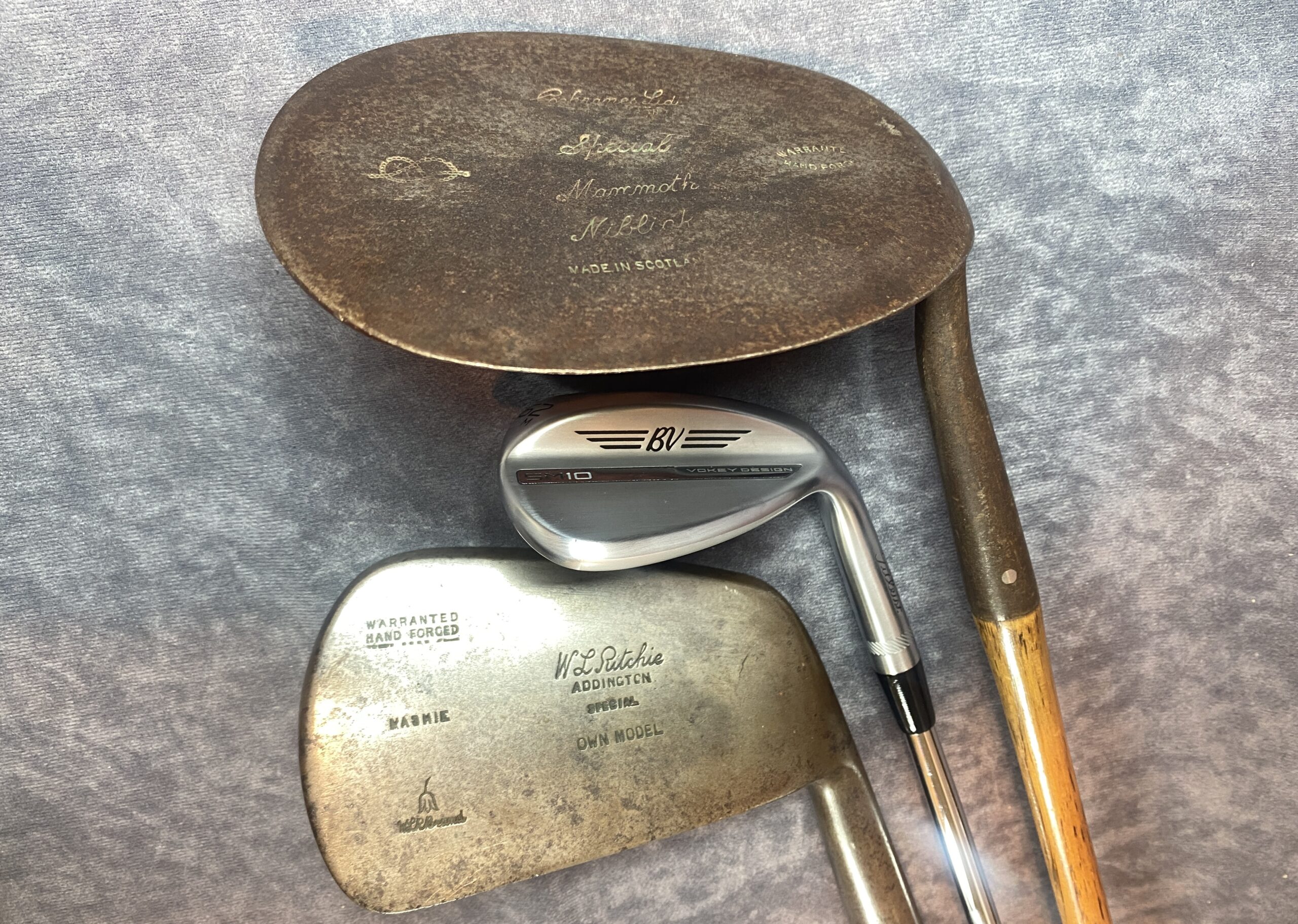
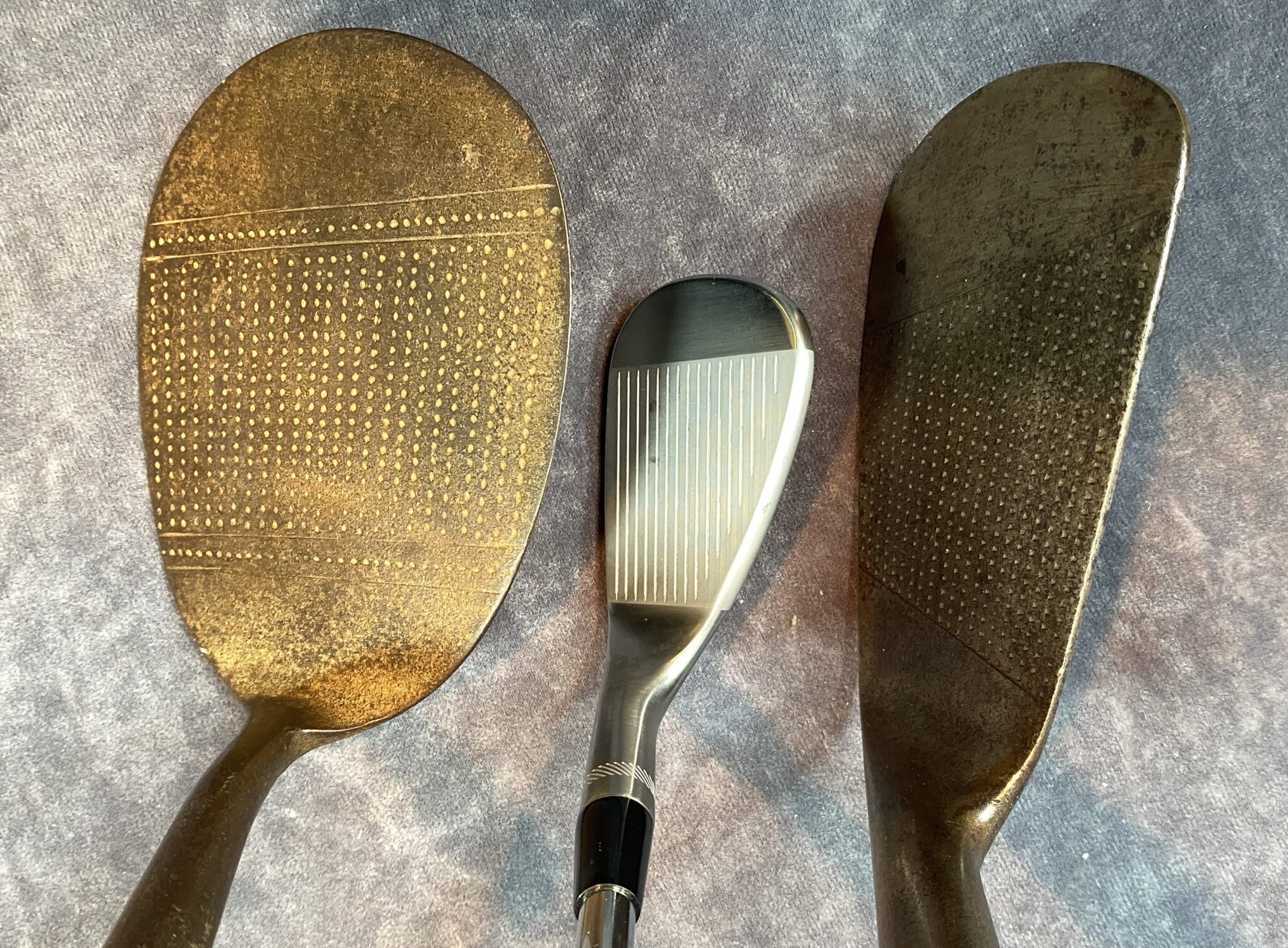
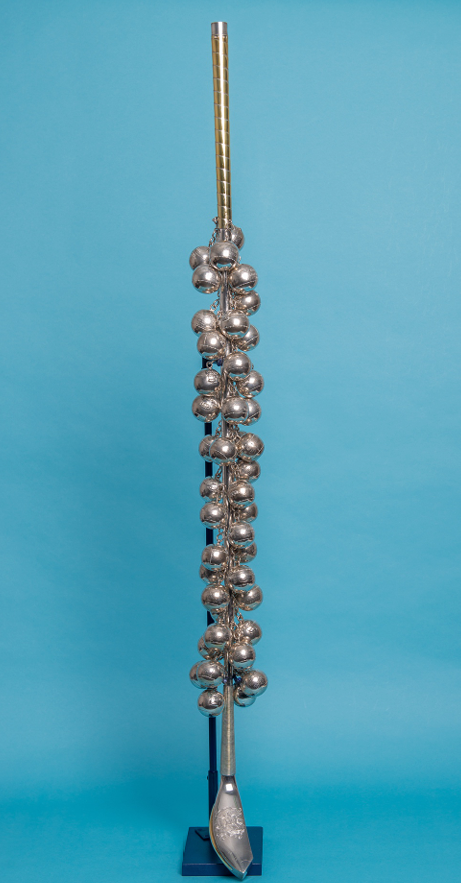
ghs Historic Golf Clubs
MORE ON THE WAY!
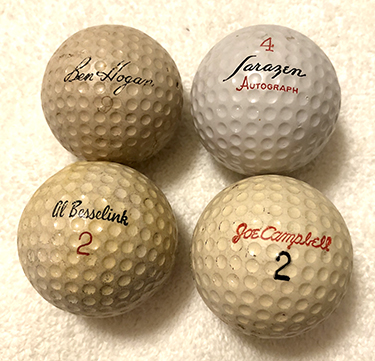
Eras of Golf Ball Collecting
1940s-Current Era
Collectors of balls for this period have many choices should they wish to focus on a particular niche, as these include balls with logos of from anything to universities to sports clubs and everything in between; corporate brands (logos); images of any number of things from animals to birds; joke balls, balls with the names of professional golfers, sometimes in script; autographed balls, itself a category as collectors often like to build a display of balls that the golfer him or herself has signed.
